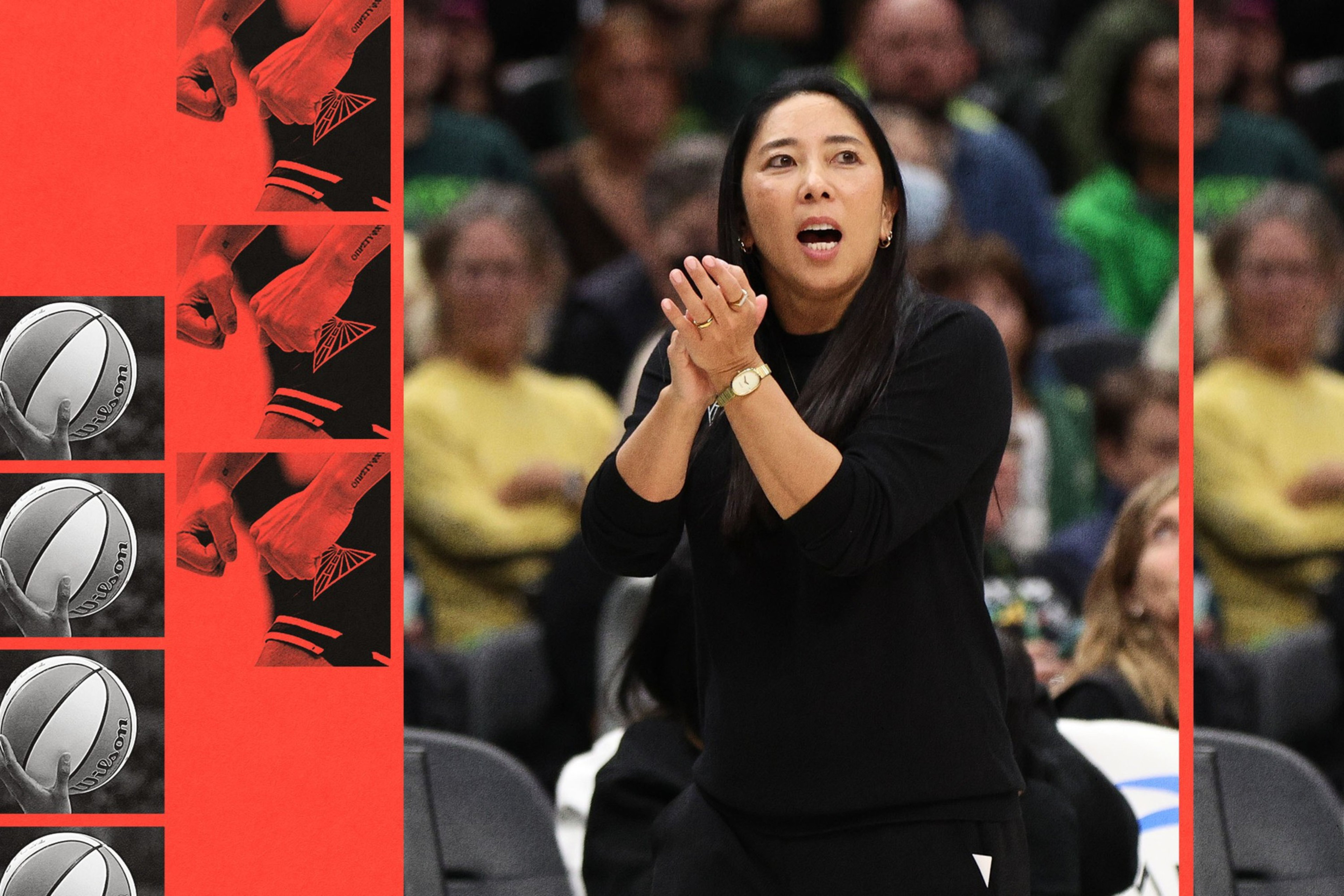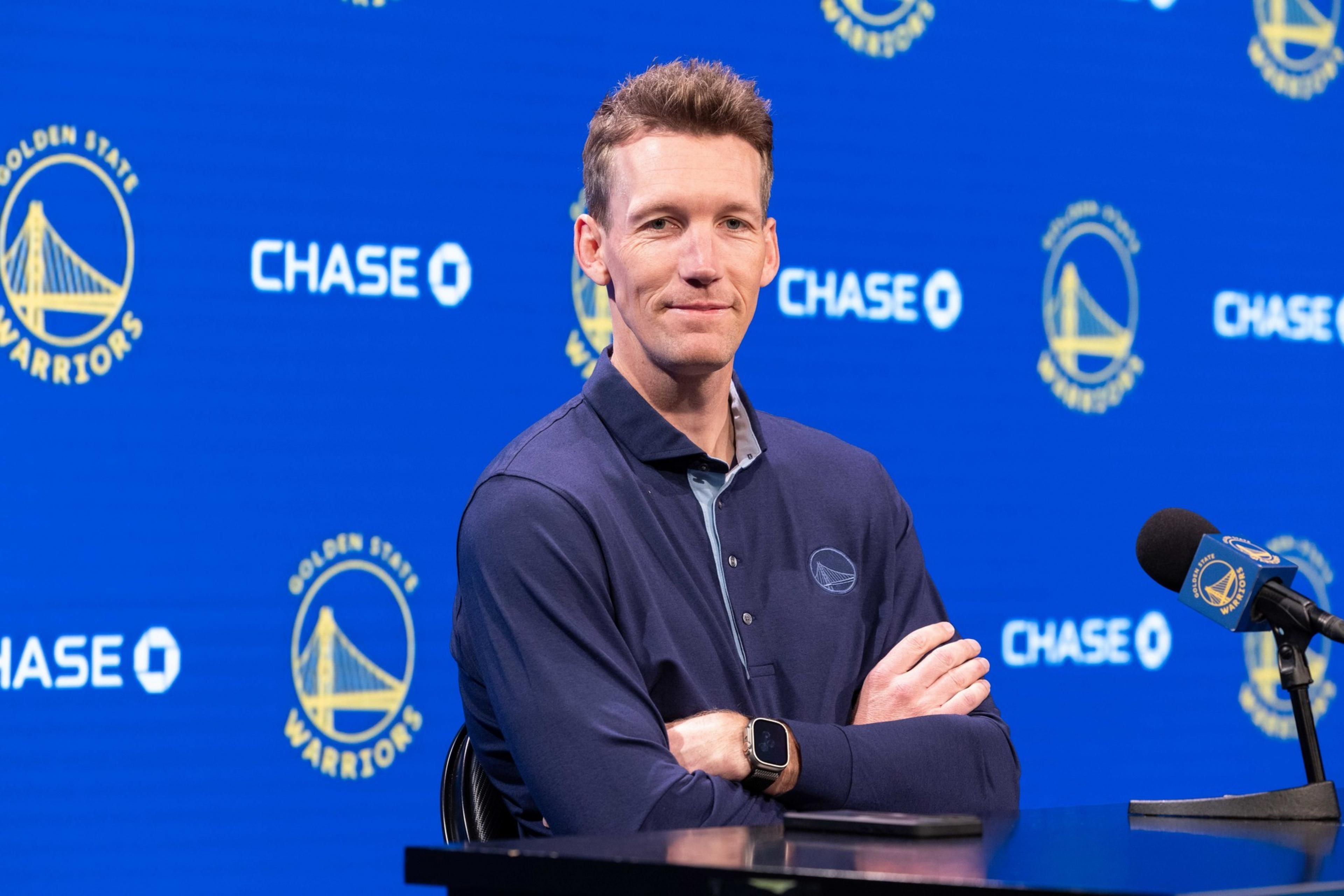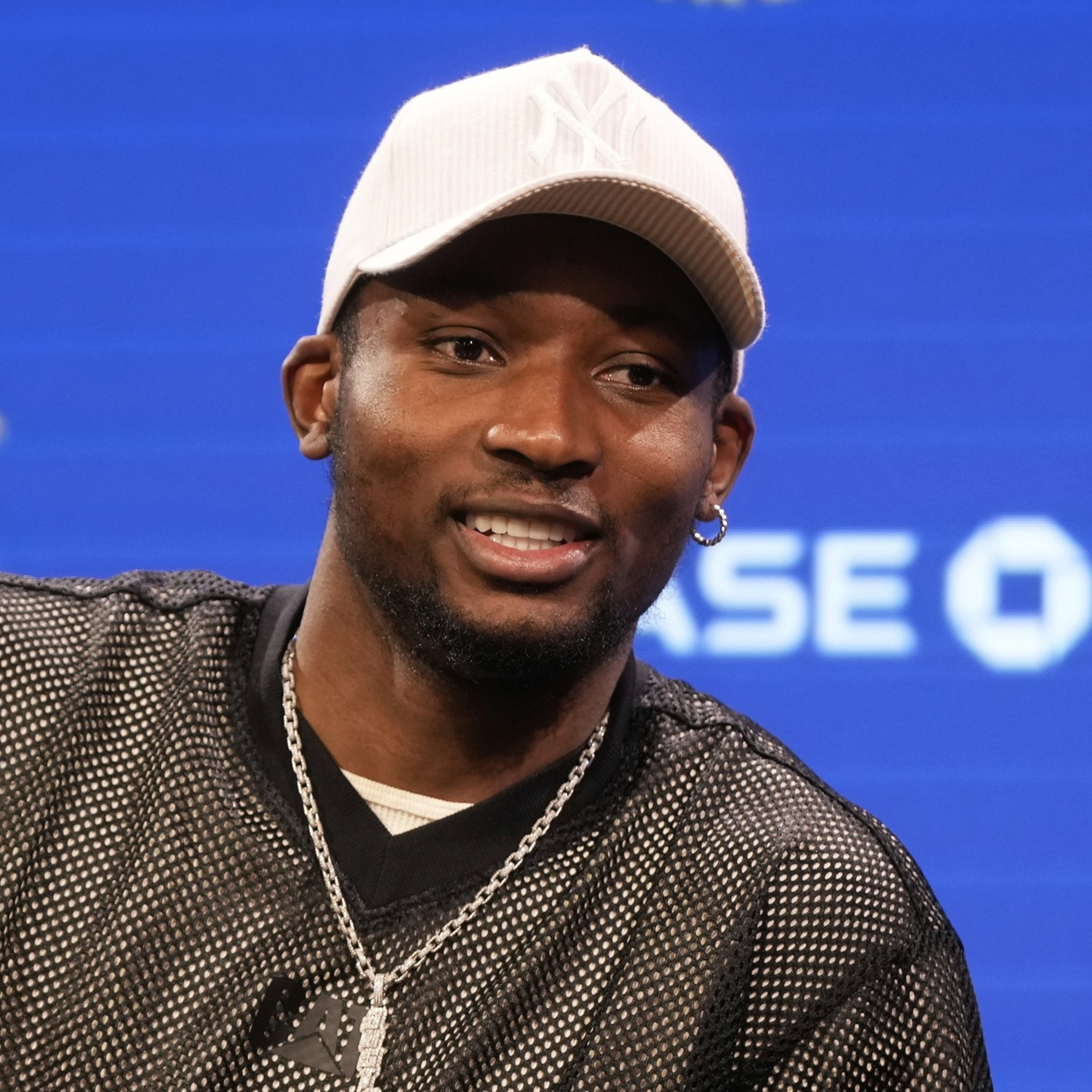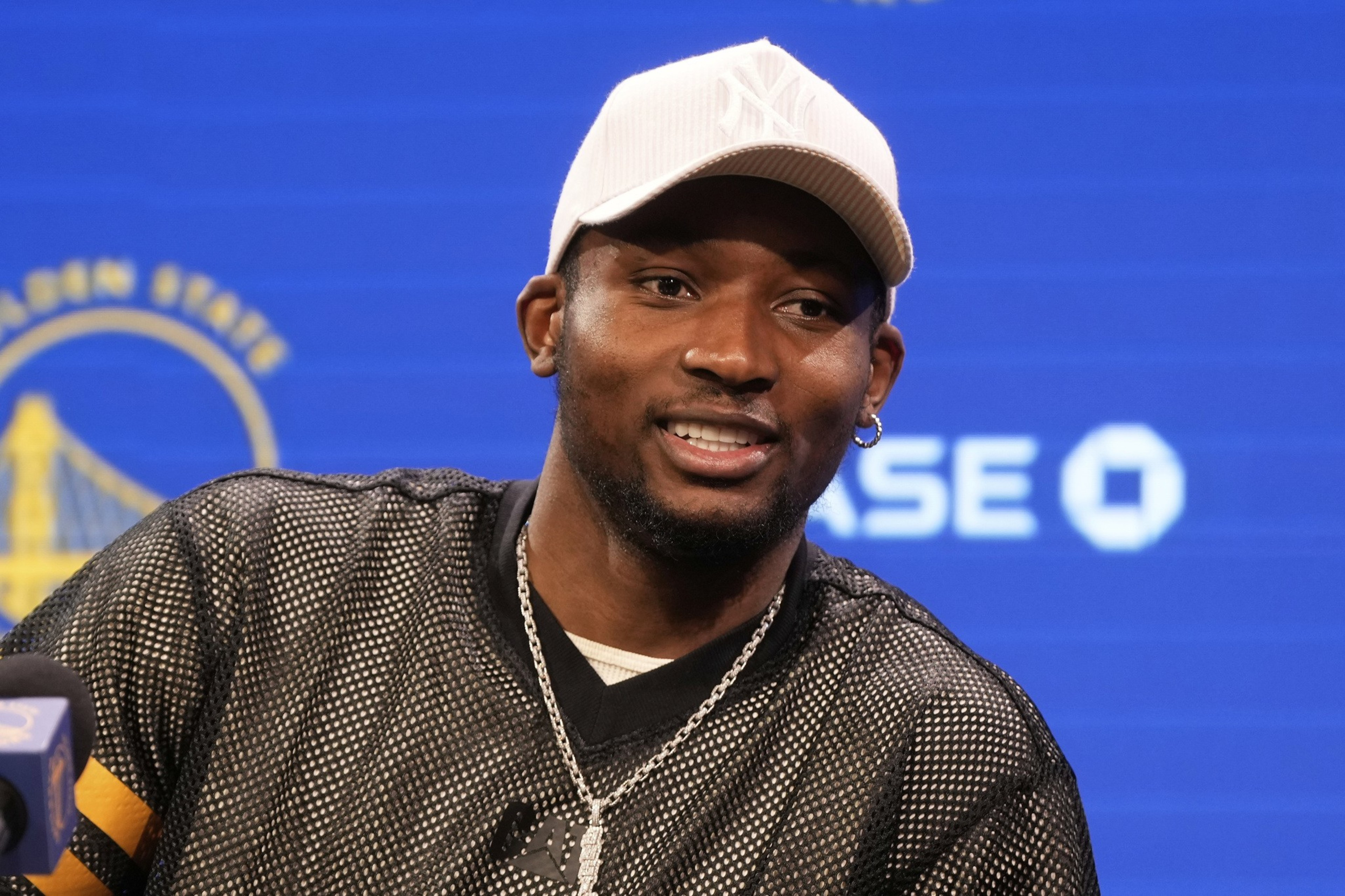Want the latest Bay Area sports news delivered to your inbox? Sign up here to receive regular email newsletters, including “The Dime.”
Jonathan Kuminga has been a restricted free agent for six weeks, and there aren’t signs that his status will change anytime soon.
The Warriors and Kuminga’s camp haven’t had contact for a couple of weeks, per a source with knowledge of the situation, as he remains at a standstill. There’s a distinct possibility that negotiations — or lack thereof — could continue through August.
Golden State offered Kuminga a two-year, $45 million contract that is essentially a one-year deal; the proposal reportedly is not guaranteed for the second year and would require Kuminga to relinquish his no-trade clause in the first.
The Warriors are interested in retaining Kuminga not only because he’d represent a young, springy player off the bench to support their aging core through the regular season, but also because they could potentially receive more for him in a trade before the deadline than they could in a sign-and-trade this summer, when prohibitive restrictions in the NBA’s collective bargaining agreement tighten the market.
Section 415: How Natalie Nakase turned the Valkyries into an immediate force

Section 415: Tim Kawakami analyzes the 49ers, Giants, and Warriors

Section 415: Min Woo Lee, Steph Curry, and the story of The Bay Golf Club

Kuminga, meanwhile, hasn’t asked out of Golden State, but it’s clear his top preference would be a fresh start. Yet as a restricted free agent, he doesn’t have the power to choose his next team immediately.
The stalemate has stalled business for the Warriors, who are expected to add veterans Al Horford and De’Anthony Melton whenever they can find a resolution with Kuminga.
Golden State has signaled that it intends to bring Kuminga back, posturing that it has shut down sign-and-trade overtures.
Here is the state of play for a complicated situation that has screeched to a halt.
The reported trade offer
The Sacramento Kings made the most significant push to acquire Kuminga via sign-and-trade, according to reports. Per Sam Amick of The Athletic (opens in new tab), Sacramento offered Malik Monk and a protected future first-round pick in exchange for the 22-year-old Kuminga and the right to pay him a three-year, $63 million deal.
A trade like that would likely require the Warriors to additionally send out either Buddy Hield or Moses Moody. No matter how tricky Kuminga’s fit is within Golden State’s system, shedding both him and a rotational wing for Monk would hurt the 2025-26 team.
The base-year compensation rule and other quirks in the CBA make sign-and-trades difficult to execute. That’s one of the biggest reasons there haven’t been more teams active in pursuing that route.

The Suns reportedly took a pass at a Kuminga sign-and-trade, but they don’t have assets Golden State would want in return. It’s possible a mystery team — maybe the Bulls after they settle their own restricted free-agency saga with Josh Giddey — enter the mix. But the Warriors are comfortable holding onto Kuminga if the only sign-and-trade options available to them are lackluster.
It’s a tough ask for the Warriors to demand a first-round pick when their hypothetical trade partner can point back at them and say, “You didn’t even play Kuminga when it mattered most, and you want a first for him?” Yet it’s also valid to try to extract the most value possible.
The standing offer
The Warriors’ reported two-year, $45 million offer (opens in new tab) is misleading, but it isn’t ridiculous.
Given the lack of trade protection and the non-guaranteed second year, it’s essentially a one-year deal that cements the Warriors’ optionality. It’s the highest starting salary (roughly $21.7 million) available to Kuminga, but it also cedes ultimate control of his future to the team.
Kuminga has reason to believe he’ll eventually ink a contract that will create generational wealth, so the specific starting number likely isn’t a major sticking point. What Kuminga values is a commitment from the Warriors (or whichever team he suits up for); a consistent, featured role; and a sense that he controls his own destiny.
Looking at it through that lens, the Warriors’ offer doesn’t make much sense for Kuminga’s camp.

ESPN reported that Kuminga’s agent, Aaron Turner, presented Golden State with the framework of a three-year, $82 million contract at Summer League. That construction would check more boxes for Kuminga but may be harder for the Warriors to trade if the wing struggles to find a consistent foothold in Steve Kerr’s rotation.
Warriors general manager Mike Dunleavy has been pragmatic and has the organization’s trust. Perhaps there’s a way for him to broker some sort of compromise that accomplishes enough of both parties’ objectives.
The nuclear option
Kuminga’s concrete standing offer, of course, is the $7.9 million qualifying offer.
The threat of taking the qualifying offer isn’t a bluff. But as of now, it’s just that: a threat.
The qualifying offer would be risky for Kuminga. By picking it up, he’d be sacrificing millions of dollars in the short term, money that there’s no guarantee he’d eventually recoup. Just comparing it to the two-year, $45 million reported offer, he’d essentially be paying $13.8 million for the right to become an unrestricted free agent next summer.
That’s a high opportunity cost for the freedom to hit unrestricted free agency. Not to mention how a decision like that could manifest itself on the court.

The biggest danger of playing on the qualifying offer would be suffering an injury. Nerlens Noel infamously turned down a $70 million contract to bet on himself on the qualifying offer, only to injure his thumb and never bank close to half that figure for the rest of his career. Those stakes could affect any player on the qualifying offer’s approach to persevering through nagging injuries, for instance.
But if the most important thing to Kuminga is taking ownership over the path of his career, the qualifying offer is the most direct route toward that.
It’d also be a nightmare scenario for Golden State.
If Kuminga picked up the qualifying offer, the team wouldn’t be able to trade him this season. The Warriors would almost certainly lose him next summer for nothing, and in the meantime they’d have a player who may feel slighted.
Kuminga taking the qualifying offer wouldn't give the Warriors any substantial roster-building advantages, either. It could give them access to the non-taxpayer midlevel exception and the biannual exception, but at this stage of free agency, there’s not much use for that. Depending on how they fill out the roster, a qualifying offer would also give Golden State the chance to enter the season under the first apron, which could come in handy down the line.
The longer this stalemate drags out, the more uncomfortable it could get for everyone involved. The deadline to sign is Oct. 1, though the two sides could negotiate an extension. If the saga reaches that point, it would mean neither side will have blinked through the start of training camp.

